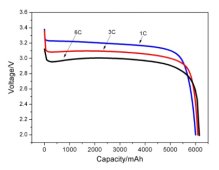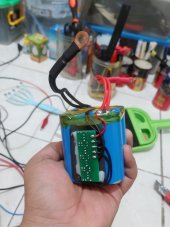Little bit of a odd thread.
First someone wants to see a CCA rating on an LFP data sheet, which is not a great sign for someone seeking to design a new high current application from the ground up. If you’re seriously considering this you really need to know how CCA is calculated and be able to get a comparable figure from a LFP voltage curve. If that’s not in your skill set then I would suggest sticking to projects where you’re mostly tweaking someone else’s design for the time being.
But the response… Yes, LFP will struggle to provide CCA level amps for any period of time. But anyone claiming to know about batteries should know that CCA is not a realistic draw for a starter and that the rating exists solely due to the quirks of LA chemistry. And they should also know that real cell voltage != output voltage under load.
Anyway, apologies for the negativity, so let’s try to calculate a realistic estimate of the C rate an LFP might need and be able to provide in this application.
So as stated a 260 draw on a 7ah battery is 37C. No one can deny that’s really sucking it down. But is it really implausible? Well the first data sheet I found rates an 8ah cell as being able to provide 240 Amps for 30 seconds. So not quite there, but a lot closer than some would have you believe.
But of course current isn’t really the thing - we want power. 260A @ 7.2 v is 1.87Kw. So let’s pull a random set of LFP discharge curves:

In the middle of the curve we drop from 3.2 to 3.0 volts when going from 1 to 6 c. So let’s just swag that at 30 C it would be output about 2.4 volts. In a 4S 7 ah system that gives us 9.6 volts at 210 amps and 2.1kw. Now there are a lot of assumptions and this is running right on the ragged edge, but so is that CCA rating.
But then someone did us the courtesy of posting actual data on the starter draw and found a 75A peak non-transient draw. Thanks cal! That 75 amps is about 11 C, which is very reasonable for a short period. And the LFP will provide that current at a higher voltage than LA.
So I can’t believe I’m saying this, but 7 ah LFP is probably enough for the application. And given how cheap the cells would be, how much risk is there to trying it really? It’s just 4 cheap cells, and there’s minimal risk it will damage the bike. I get that a lot of people think of LFP as some hallowed object that needs to be carefully guarded, and that makes sense with a 320 ah system that can burn your house down with a short, but that’s not the situation here.
This is getting long, so I’ll try to add some thoughts about implementation in another post.






